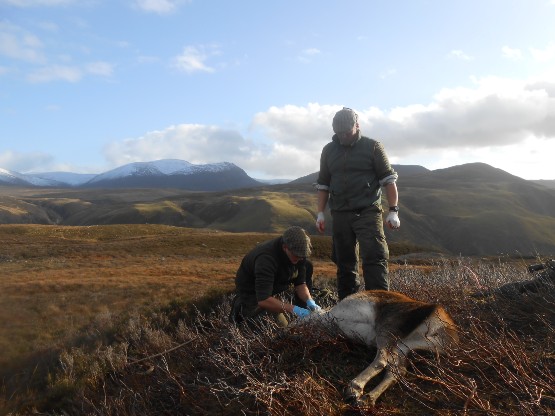If its your ambition to get out and hunt and harvest one of the UK’s largest deer species, Red, Fallow or Sika, there is a rapidly diminishing window of opportunity for you to do so.

In Scotland, 15thFebruary, marks the last day of the season for Red, Sika and Fallow Doe. Thereafter, north of the border, only Fallow Buck and Roe Doe remain in season.
In England & Wales the main season for the larger species continues a little longer until 31st March, after which, the deer that you are legally allowed to harvest, rapidly tapers off to a point where, by the beginning of May only Roebuck and Muntjac remain in season.
By the middle of February, we will have gained around an hour and a half of daylight in the evening and three quarters of an hour in the morning. As the hours of daylight gradually increase our focus shifts away from the females who are soon to give birth, to the males and then predominantly to Roebuck.
That is not to say that the quality of stalking will diminish, it will just shift from short, cold days hunting big deer, to long warm summer days hunting the smaller Roebuck. Each are equally rewarding, however, if it is purely venison that you are after, with the larger species weighing two or three times that of Roe, it is the next few weeks that provide the best harvest.
Another feature of February is the absence of game bird shooting. With the season for game birds coming to an end on the 1st February, and with game keepers feeling less anxious about their birds, deer stalkers can once again re-claim the countryside for themselves.
As for the behaviour of deer during February, it is useful to know that as a general rule, the herding species of deer will be made up of single sex herds, whilst the Roe will be in mixed family groups.
You should also be aware, that mature Roebuck will now appear advanced in velvet, but this is not true of all Roebuck. The Roebuck kid will instead be casting its ‘button antlers’ during February, so will be absent of antler for some weeks, before re growing their first simple set of antlers in time for the start of the Roebuck season in April.
Understanding these important aspects of deer ecology, are crucial to being a successful hunter and that is what makes reading the County Deer stalking almanac so invaluable!
If you’d like to take the crucial first step in becoming a trained hunter then the widely recognised way to do so, is by taking the PDS1 Certificate. Follow this link for more detail about the course: deer-stalking-course
Or if you know someone that is thinking of getting into deer stalking then mention the PDS1 to them and email
 IN Season in England & Wales: Roe Doe, Fallow Doe & Fallow Buck, Sika Stag & Sika Hind, Red Stag & Red Hind, CWD Buck & CWD Doe, Muntjac Buck & Muntjac Doe.
IN Season in England & Wales: Roe Doe, Fallow Doe & Fallow Buck, Sika Stag & Sika Hind, Red Stag & Red Hind, CWD Buck & CWD Doe, Muntjac Buck & Muntjac Doe.
Off Season in England & Wales: Roebuck.
In Season in Scotland: Sika Hind, Red Hind and Fallow Doe until 15th Feb only. Fallow Buck & Roe Doe remain in season throughout February.
Off Season in Scotland: Red Stag, Sika Stag & Roebuck. Also Red & Sika Hind and Fallow Doe from 16th February.
(Peter Jones - Editor)



















